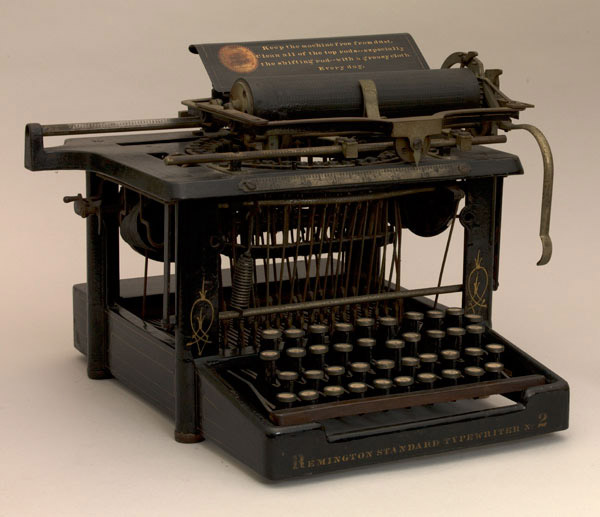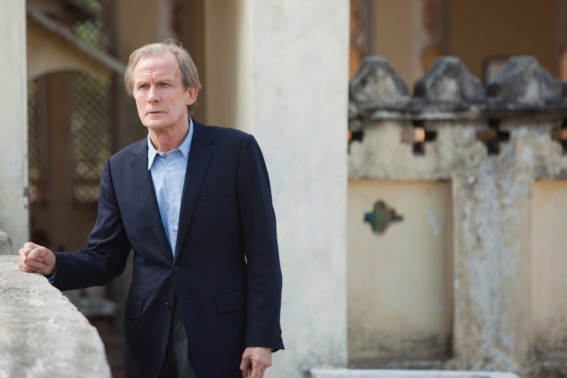 |
| Sir Isaac Newton brooding over the Universe British Library courtyard |
London 2002 continued...
Monday 16 September 2002
This is not to be missed: The British Library. Take the Underground to King's Cross. Turn right out of the station and walk a block. As you pass by St. Pancras station on your right, look up. It is a wonder.
Oh my. This library was one of my favorites. It is in a new building (1998) that has a grand statue in the front courtyard of Sir Isaac Newton brooding over the Universe. Inside is a book lover's dream. John Evelyn's diary from 1660 (in tiny, tiny handwriting); Jane Austen's writing desk; the original Alice's Adventures Underground with Lewis Carroll's own drawings; the manuscript of Middlemarch by George Eliot. (I had just read this earlier in the year and was thrilled to see the original.) Also a display of original Beatles' lyrics on paper napkins and the backs of greeting cards proving that inspiration can strike anytime. "I want to hold your hand..." There also, of course, are illuminated manuscripts, bibles, maps, Magna Carta, and more.
A wonderful gift shop full of books - what else. It is worth it to buy the souvenir guide. (Five pounds sterling.) Great photos and much history.
We had lunch in the shadow of the glass tower that runs up the middle of the building and contains the library of King George III. About 65,000 volumes. Awesome.
Next, we found our way to Covent Garden. Wandered in and out of the small shops at Neal's Yard (fashions, shoes, magic, natural remedies); had tea at the original Covent Garden; bought an enameled brooch for Mom at one of the antique stalls; and, miraculously found our way to nearby Stanfords, Britain's largest bookseller of maps and travel books, to purchase a copy of Mrs. P's Journey. It is about the woman who created the London A-Z map.
Tuesday 17 September 2002
| Terre a Terre Brighton |
Day trip to Brighton. (An hour south by train from Victoria Station.) Toured the fantastic Royal Pavilion built by George IV with its Oriental domes and Chinese-style state rooms. Lunch at Terre a Terre vegetarian restaurant. Some shopping in The Lanes, a maze of small stores and restaurants. Bought chocolate-covered violet cremes that were yummy. A stroll along the boardwalk with great views of the Brighton Palace Pier (built in 1891) stretched out on the water looking for all the world like a grande dame in white lace. High tea at the Grand Hotel overlooking the English Channel. Three tiers of goodies: scones, finger sandwiches, sweets. Took a taxi back up the long, steep hill to the train station and back to London.
Wednesday 18 September 2002
| Cecil Court bookshops |
Spent five hours (including lunch) at the National Portrait Gallery. If you only see one museum, make it this one. Start at the top floor and work your way through the faces of British History. I was swooning. Henry VIII, Elizabeth I, Samuel Pepys, Jane Austen...on and on. The only disappointment was that the gallery with a portrait of PM Tony Blair (I am crazy about him) was closed. Alas...
Afterwards, we turned left out of the museum and strolled along Charing Cross Road with all its bookshops. Too bad; so sad. 84 Charing Cross Road is no longer there, but its spirit is. Don't miss Cecil Court which is full of teeny bookshops too. It is right off CCR and is a treasure.
I bought a book of English essays and Twenty-Five by Beverley Nichols. He wrote Merry Hall which is a must read.
Thursday 19 September 2002
This is the morning we toured Buckingham Palace. The Queen only opens the palace to tourists in August and September while she is summering at Balmoral. La-de-dah for her.
The best story about this experience:
As we entered the palace through the Ambassador's Entrance we had to walk through a long, narrow hallway that was lined with marble busts perched on columns. One loud American berated the guard: "Why aren't these busts identified with names. It would be helpful to know who they represent."
To which the guard replies in her chilliest British fashion: "Madame, this a not a museum. This is the Queen's home."
So there!
After the palace and tour through the gardens, we made our way to the Ritz Hotel. Mom had a seat in the lobby while I wrote a letter to myself on the hotel's stationery at a small wooden writing desk. Tres elegante. I posted the letter and it arrived in my post office box shortly after I arrived home. A little memento of our visit.
| Of course I bought stationery at Smythson's |
To read the entries for the remainder of our time in London, start here.












